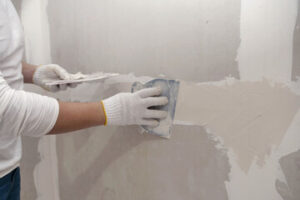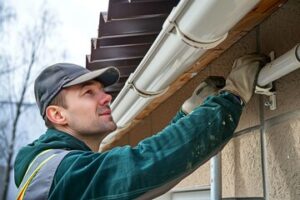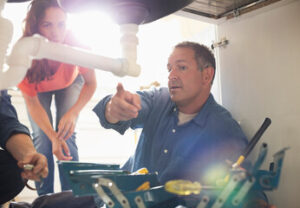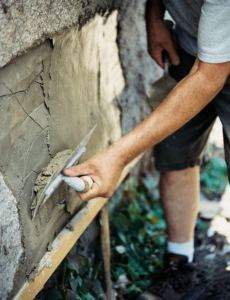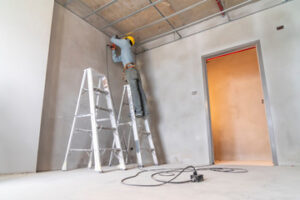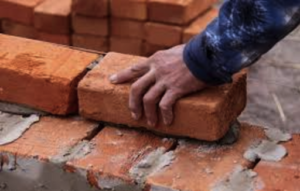Deck building is a complicated process that requires carpentry skills. Before starting a deck project, it’s important to check with local authorities to see what building codes apply and whether a permit is required.

Installing the principle framework of a deck includes interior joists spaced 12 to 16″ apart and rim joists that form the outside edge. Joists are typically made of pressure-treated lumber. Contact Charleston Deck Crafters for professional help.
When building a deck, you need detailed plans to help clarify the project’s direction. The plans will show you how much material you need and will help to avoid costly mistakes. They will also make it easier to complete the build on time and within your budget. The best way to create a set of plans is to work with a professional deck builder. They will know how to draw your plan to scale and can provide you with a detailed drawing of the entire deck, including footings, joists, and beams. They may also be able to provide you with blueprints and construction drawings.
You can also design your own deck plans if you have the necessary skills. This is a great way to save money and get the exact design you want. It can be a bit challenging, but it is possible to learn to design your own deck. Just remember to keep in mind your lifestyle and how the deck will be used, as this can influence the design.
Deck plans should start with a site plan, which is the sketch that shows your property lines and any other elements that might affect your deck construction. It should include the dimensions of the house and other structures in the yard, as well as any obstacles that might interfere with your deck, such as electrical outlets or dryer vents. The plans should also include a cross section of the deck/house connection and a full plan view of the piers, posts, and joists. The plan view should include the joist sizes, decking sizes and layout, post to girder connections, and details of any other features that you might want on your deck, such as stairs.
Once you have a basic plan for your deck, it’s time to decide whether you want to hire someone to do the design or draft the plan yourself. You can also choose to work with an architect, which will be the most expensive option, but will probably be necessary for more complicated and extensive decks. You can also work with a designer, which will cost less but may not be as experienced as an architect.
Proper Footings
Footings are essential for any structure to remain stable and safe. Decks are no exception – they must be strong enough to resist vertical loads, lateral forces, and uplift pressures (from wind, seismic activity, and occupant movements). Footings also minimize settling that can cause warping or cracking in the wood. The type of footings used depends on local conditions and building code requirements.
The most common and recommended footing material is concrete, which can be poured into a form to create a round or square structure. The holes for the footings need to be dug a specific depth, usually below the frost line, to prevent freezing and thawing that can disrupt the structure’s stability. It’s also important to add several inches of gravel to the base of the hole to improve drainage and reduce the risk of waterlogging, which can weaken the footings.
Once the holes are dug, it’s time to construct the footings. This is a critical step for the entire deck structure, so it’s important to follow the framing plans closely, taking care to locate the center of each post and placing them correctly on the footings. When constructing a concrete footing, it’s best to use a concrete tube form that can be filled with pre-mixed concrete. This is faster and more economical than a traditional hand-dug hole and provides an even, consistent footing. When filling the form with concrete, it’s important to tamp down the top of the mixture to remove air pockets and ensure a stronger, more durable footing.
Another option is a buried post footing, which consists of wooden posts set into holes in the ground. This method is less expensive than a concrete footing, but it can be susceptible to ground movement and may require additional support to maintain stability. If regulations allow, this method can be ideal for smaller decks with lighter loads in areas with more stable soil.
Helical piers are an alternative to buried post footings and can be an excellent choice for decks in unstable soil. These metal piers have a helix-like shape that helps them anchor securely in the soil. They’re fast to install and can be adjusted to accommodate varying soil conditions.
Poured Piers
Piers are the foundation that supports the weight of your deck or porch. It’s essential that you build your piers correctly to ensure stability and longevity of the structure. If you have a deck that is sagging or has cracked walls, it’s likely due to a poor foundation. To avoid this problem, you should consider using poured piers.
A poured concrete pier is an effective footing for your deck and will be the best option in most cases. It requires digging down to the frost line, pouring a concrete footing, and then securing a pressure-treated wood deck post to it. This method is time consuming, but it’s well worth the effort.
The piers should be spaced 1-1.5 feet apart, which is necessary to prevent moisture from damaging the wood. They should also be set in a hole that is at least 6 inches deeper than the ground. A hole that is too deep may cause the pier to shift or sink over time.
There are several different types of piers available, including concrete, brick, and steel. Each type has its own unique benefits. Concrete piers are typically recommended for small projects, and steel is the preferred choice for larger, high-load projects. However, both are effective for building a sturdy deck.
One of the most important factors to consider when choosing a pier is the soil conditions in your area. Some areas have unstable or expansive clay soils, while others have firm and stable bedrock. For this reason, piers should be spaced closer together in poor soil conditions and farther apart in stable soils.
A residential diamond pier is an excellent option for decks and porches in most areas, and can be installed with minimal soil disturbance. It can support an equivalence of a poured concrete footing and comes with documented structural values for bearing, uplift, and lateral loads.
Another benefit of a residential diamond pier is that it can be installed quickly and easily, even in challenging sites. This can save you money, and also reduce project delays. Whether you’re building a simple deck or a large backyard retreat, proper piers are key to the durability and safety of your project.
The Right Materials
Choosing the right materials is important when you build decks, as it impacts how long they will last and their appearance. The material you choose will also influence how much maintenance the deck requires and whether it is a good fit for your climate. The different types of materials available include wood, composite, and PVC.
During the planning phase of your project, you will need to decide which type of material best suits your needs. Wood is a traditional option and offers a natural aesthetic. However, it requires regular maintenance to prevent rot and moisture damage. If you prefer a low-maintenance option, consider a composite or PVC deck. These materials are durable and resist weathering better than wood, making them a smart choice for homeowners who want their decks to look great and be safe to use.
The piers that hold up your deck will also need to be made from strong and sturdy materials, like pressure-treated lumber. It’s important to ensure that the piers are properly anchored into the ground, and this is where many do-it-yourselfers fail. Anchor holes must be deep enough to withstand freezing and thawing cycles, as well as the weight of your deck. This is why working with a professional is important to help ensure your deck will be stable and safe for years to come.
When you select the right materials for your deck, keep in mind that the cost will vary depending on the type of deck you’re building and your location. For instance, a composite or PVC deck is typically more expensive than a wood deck. However, these materials are long-lasting and require less maintenance than wood, so they can save you money in the long run.
Once you’ve selected the appropriate materials for your deck, you can start building. If you’re not familiar with construction work, it is recommended that you hire a professional deck builder to ensure that the deck is built correctly and safely. A professional will use quality materials and adhere to all construction standards, so you can be sure that your deck will last for a long time.

